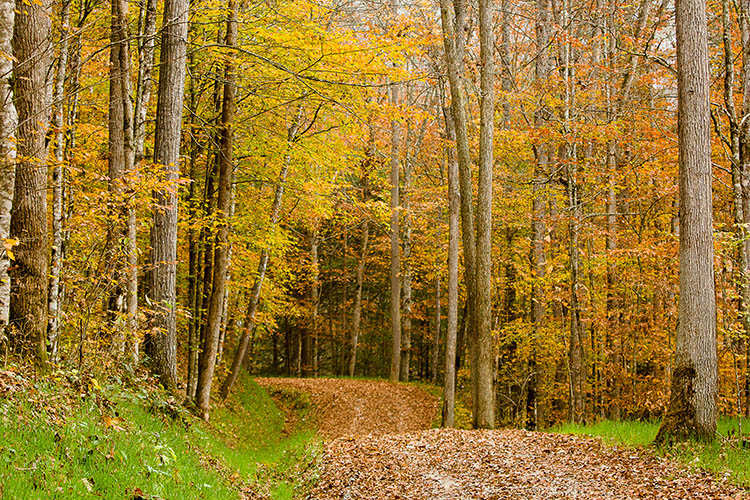Everything has a season, and Kentucky’s may be autumn
Everything has a season, and Kentucky’s may be autumn

LEXINGTON, Ky., — Every year around this time, nature shakes off her summer greens, grown dusty and dim, and reaches into her closet for her autumn jewels. Kentucky is one of the best places in the country to view fall colors. While people look forward to that impressive display of reds, yellows and oranges, the change is not merely for show. It’s part of a very important ecological process.
Throughout the growing season, chlorophyll, the green pigment in leaves, photosynthesizes sunlight and carbon dioxide into sugars trees need to survive and thrive. As daylight hours shorten in late summer and early fall, a layer of cork cells forms at the base of each leaf. This restricts the flow of water and minerals into the leaf, which means spent chlorophyll cannot be replaced. As chlorophyll dies, it no longer masks other pigments present in the leaf —the yellows, oranges and browns of carotenoids.
The quality of light also affects color brilliance. The production of one group of leaf pigments, the anthocyanins, is dependent on the breakdown of sugars in the presence of the bright light in late summer.
Minerals taken into the leaves during the growing season are recycled after the leaves drop to the ground. When the leaves decompose, their nutrients again are available to be taken up by the area’s plant life, and organic materials nourish the soil.
“Year in and year out, the cycle continues, whether the season brings brilliant leaves or faded browns,” said Laurie Thomas, extension forester in the University of Kentucky College of Agriculture, Food and Environment. “It’s nature’s way of making sure the circle of life continues. This year’s growth feeds next year’s plants and animals.”
It’s early yet. Autumn has just begun. A few trees are starting to change, but the big display is still ahead. The best color in the state typically peaks around the second and third weeks of October.
In the best of years, autumn foliage in Kentucky stacks up against any rival. Hardwood forests blanket about 47% of the commonwealth with about 175 tree species, many of which are known for their bright fall color.
Thomas attributes that to the state’s location.
“Kentucky enjoys a full palette of fall colors, because of we are fortunate to have diverse climate and soil composition. That means many tree species common to both northern and southern states grow here,” she said.
Different species have their own signature colors. Hickories, Kentucky coffeetrees, and the state tree, the tulip poplar, glow in shades of yellow. Maples have a stunning array of colors, depending on the variety. Sugar maples turn orange-yellow or orange-red, and red maple takes on a deep red hue. The native sassafras tree shows off with a rainbow of deep orange, yellow, scarlet and purple on its mitten-shaped leaves.
Kentucky has many natural places to view fall color, whether by foot or vehicle. A drive through the Daniel Boone National Forest in Eastern Kentucky wanders through dense woodlands and steep terrain that show off fall’s glory. In Central Kentucky, walk the trails in Bernheim Arboretum and Research Forest in Bullitt County. The Woodlands Trace National Scenic Byway is one of the best routes to experience the season in Western Kentucky. By traveling east to west in the state as the season progresses, visitors can view all of Kentucky’s fall foliage at peak or near-peak conditions.
Nationwide fall foliage predictions can be found at https://smokymountains.com/fall-foliage-map/.
Forestry & Natural Resources



